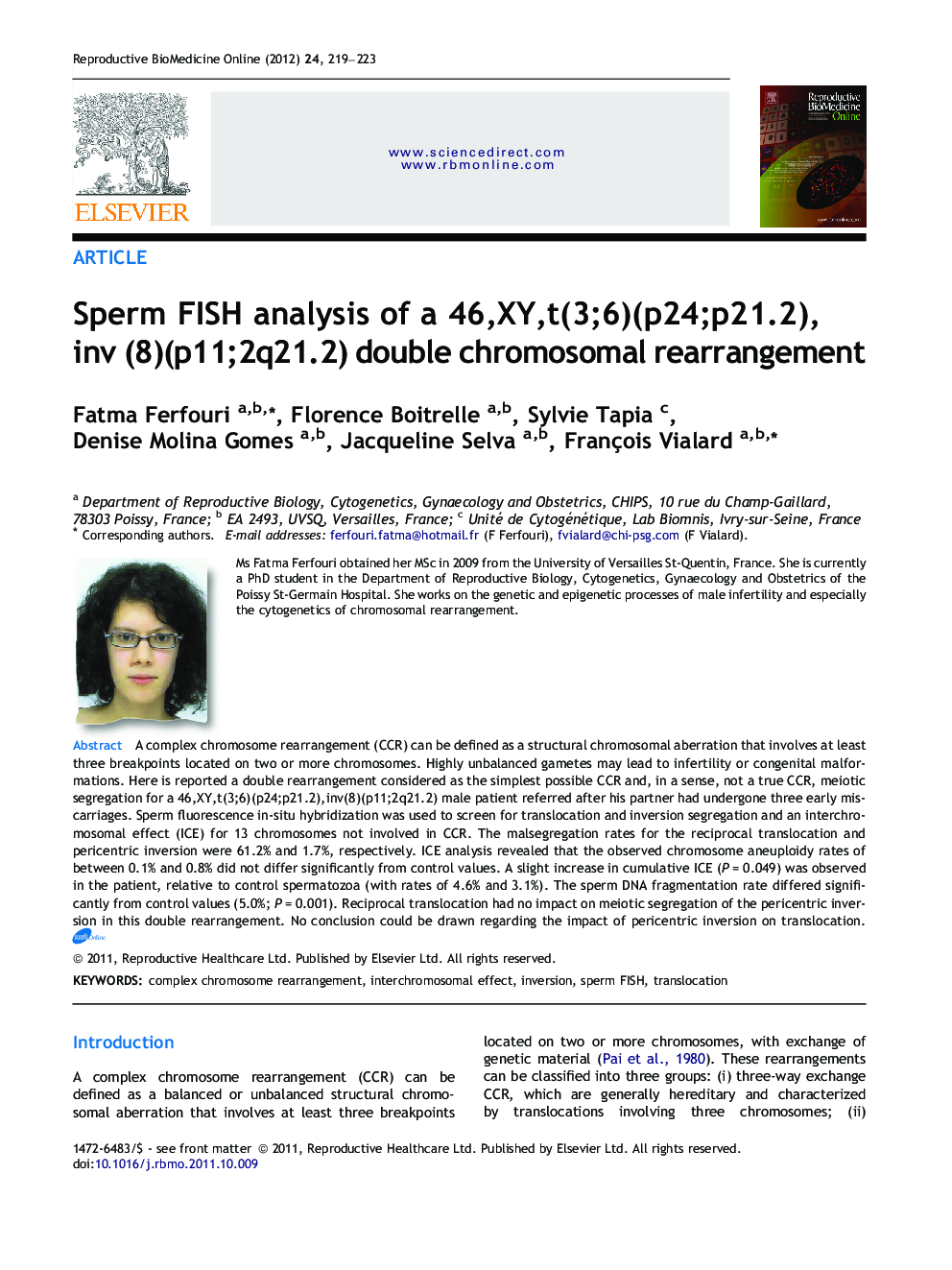| Article ID | Journal | Published Year | Pages | File Type |
|---|---|---|---|---|
| 3971181 | Reproductive BioMedicine Online | 2012 | 5 Pages |
A complex chromosome rearrangement (CCR) can be defined as a structural chromosomal aberration that involves at least three breakpoints located on two or more chromosomes. Highly unbalanced gametes may lead to infertility or congenital malformations. Here is reported a double rearrangement considered as the simplest possible CCR and, in a sense, not a true CCR, meiotic segregation for a 46,XY,t(3;6)(p24;p21.2),inv(8)(p11;2q21.2) male patient referred after his partner had undergone three early miscarriages. Sperm fluorescence in-situ hybridization was used to screen for translocation and inversion segregation and an interchromosomal effect (ICE) for 13 chromosomes not involved in CCR. The malsegregation rates for the reciprocal translocation and pericentric inversion were 61.2% and 1.7%, respectively. ICE analysis revealed that the observed chromosome aneuploidy rates of between 0.1% and 0.8% did not differ significantly from control values. A slight increase in cumulative ICE (P = 0.049) was observed in the patient, relative to control spermatozoa (with rates of 4.6% and 3.1%). The sperm DNA fragmentation rate differed significantly from control values (5.0%; P = 0.001). Reciprocal translocation had no impact on meiotic segregation of the pericentric inversion in this double rearrangement. No conclusion could be drawn regarding the impact of pericentric inversion on translocation.A complex chromosome rearrangement (CCR) can be defined as a structural chromosomal aberration that involves at least three breakpoints located on two or more chromosomes, with the exchange of genetic material. Highly unbalanced gametes may lead to infertility or congenital malformations. We report here the first known double rearrangement CCR meiotic segregation for a 46,XY,t(3;6)(p24;p21.2),inv(8)(p11;2q21.2) male patient referred to our hospital after his partner had undergone three early miscarriages. Sperm fluorescence in-situ hybridization was used to screen for translocation and inversion segregation and an interchromosomal effect (ICE) for 13 chromosomes not involved in CCR (chromosomes 7, 9, 11, 12, 13, 15, 16, 17, 18, 20, 21, X and Y). The malsegregation rates for the reciprocal translocation and pericentric inversion were 61.2% and 1.7%, respectively. An ICE analysis revealed that the observed chromosome aneuploidy rates between 0.1% and 0.8% did not differ significantly from control values (between 0.1% and 0.5%). A slight increase in cumulative ICE for the 13 chromosomes (P = 0.049) was observed in the CCR patient, relative to control spermatozoa (with rates of 4.6% and 3.1%). The sperm DNA fragmentation rate was slightly higher than our laboratory’s normal cut-off value (13%) and differed significantly from controls values (5.0%; P = 0.001). In agreement with previous results for isolated inversions, we conclude that reciprocal translocation had no impact on meiotic segregation of the pericentric inversion in this double rearrangement CCR. No conclusion could be drawn regarding the impact of pericentric inversion on translocation.
